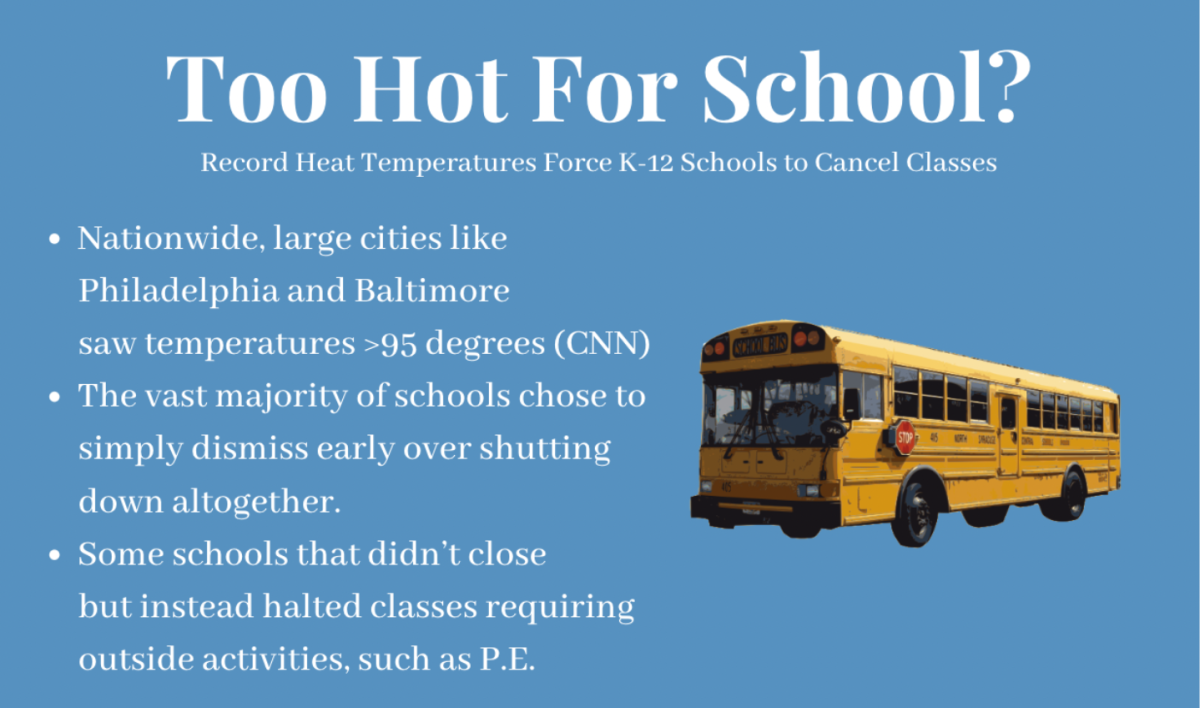Ninety-degree and higher temperatures across Connecticut in early September 2023 forced schools with antiquated infrastructure to dismiss students. This decision followed a summer of extreme weather records that dominated the news, where over 5,000 heat and rainfall records were broken in the US, according to PBSGlobalNews.
Over 60 million people received heat advisories, primarily across New England and the Midwest. Numerous K-12 schools dismissed students early over concerns about the feasibility of learning under such high temperatures.
Experts point to the surge of scorching heat as further evidence of the climate crisis and emphasize the lack of preparation that schools across the nation currently have in facing rising global temperatures.
“Schools really need to be thinking about how climate change is going to impact them,” Laura Schifter, a senior fellow at the non-profit think tank Aspen Institute, told CNN. “[They need] to develop and build plans in place to adequately respond.”
The under-preparedness of schools had primarily gone unnoticed until now. According to CT Insider, at least 16 school districts had closed on Sep. 8, the vast majority of which were “without air conditioning.” These conditions created tough environments for students to obtain and process information. According to a study by the Harvard Kennedy School, each additional degree in Fahrenheit caused a 1% drop in student learning quality.
“The early dismissal [actually] benefited me in a good way because of how hard it was to even focus because of the heat making it hard to learn,” Shea Sabrowski ’24 said; a student at Fairfield-Ludlowe, one of the schools in the area without air-conditioning.
However, students at Staples High School were largely unable to notice inside the building, as its facilities were more equipped to deal with higher temperatures than most schools across the northeast and the U.S. According to the Board of Education, Staples spent over $1,823,000 on maintenance and repairs last year alone.
“I could only really notice the heat when I was outside the building, [because] the school was [kind of] normal when I was inside,” Cole Siegner ’25 said. “That’s like why you need proper funding for buildings so that you can’t notice when you’re inside Staples.”
















































